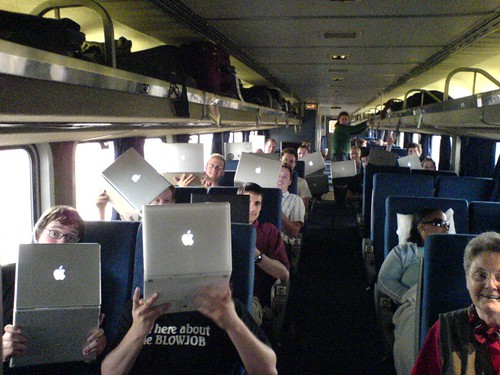Our team has slowly been transitioning from IRC to
Campfire (iPhone interface helped with this
decision) for internal team discussions. Earlier today, I decided to
setup Campfire to connect to Growl. There are a few scripts to do this,
but I figured that I’d consolidate the steps here for my teammates and
share with everyone else in the process.
Step 1: Get stuff installed
You’ll need to install the following programs on OSX.
desktop app)
- Follow instructions on their homepage (requires restart of
Safari)
Step 2: Setup Campfire
Once you have everything installed, you can go ahead and create your
Campfire Fluid application. You’ll need to provide your Campfire URL and
a name for the application.
::: thumbnail

[Uploaded with plasq’s
Skitch!]{style=”font-family: Lucida Grande, Trebuchet, sans-serif, Helvetica, Arial; font-size: 10px; color: #808080”}
:::
Once you get it running, you should be able to run your Campfire
application in it’s own window.
::: thumbnail

[Uploaded with plasq’s
Skitch!]{style=”font-family: Lucida Grande, Trebuchet, sans-serif, Helvetica, Arial; font-size: 10px; color: #808080”}
:::
Step 3: Install the Campfire Growl script for GreaseKit
Next, you’ll want to install this
script, created by Tim
Harper, on userscripts.org within your Campfire Fluid.app instance.
Under the Userscripts menu, you’ll see: Browse Userscripts.org.
::: thumbnail

[Uploaded with plasq’s
Skitch!]{style=”font-family: Lucida Grande, Trebuchet, sans-serif, Helvetica, Arial; font-size: 10px; color: #808080”}
:::
Find your way to the script (search for: “Campfire Growl”) to find and
install the script.
::: thumbnail

[Uploaded with plasq’s
Skitch!]{style=”font-family: Lucida Grande, Trebuchet, sans-serif, Helvetica, Arial; font-size: 10px; color: #808080”}
:::
Once it installs, you’ll then need to activate it in the Fluid
applications management interface. Within Campfire application, go to
Userscripts > Manage Userscripts.
::: thumbnail

[Uploaded with plasq’s
Skitch!]{style=”font-family: Lucida Grande, Trebuchet, sans-serif, Helvetica, Arial; font-size: 10px; color: #808080”}
:::
Then activate it like so:
::: thumbnail

[Uploaded with plasq’s
Skitch!]{style=”font-family: Lucida Grande, Trebuchet, sans-serif, Helvetica, Arial; font-size: 10px; color: #808080”}
:::
..and that’s it! When you’re not focused on Campfire… you should see
Growl notifications when other people are talking in the active room.















